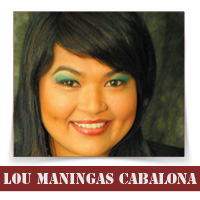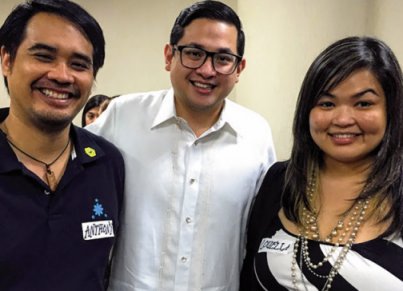
By: Lou Maningas Cabalona
July 2016 marks the start of an era for the Philippines as the newly sworn-in President Rodrigo Duterte takes over the “Rising Tiger of Asia,” promising to continue the macro-economic policies of the outgoing administration of Benigno Aquino III, whose market friendly economic agenda has helped drive economic growth above six-percent during his term –– the fastest six-year growth period in six decades.
In an eight-point economic agenda, the Duterte government promises to prioritize tax reform, strengthen the basic education system, increase infrastructure spending and fight corruption – potential answers to some of the structural problems facing the Philippine economy that Aquino critics claim his administration has not addressed.
This inclusive approach, combined with the expectation that the Philippines will be a trillion-dollar economy by 2030 with the youngest workforce in Asia, Filipinos all over the world step up to challenge of becoming an active collaborator in realizing a better Philippines in the future.
On October 10 to 17, 2016, an expected 60 to 100 young business leaders and professionals across the Filipino diaspora, including myself, will gather together in Manila to plan for the future of global Filipino business with President Duterte and his administration. But to plan for our future, we must first know what we want. I asked some of the YBU Leaders; what do you want to see in Philippines 2030?
Federation of the Philippine American Chambers of Commerce (FPACC) Vice President of Entrepreneurship Opportunities and Los Angeles-based business owner, Ryyn Schumacher, sees three main things: one, the “Silicon Islands” where technology, social entrepreneurship ventures, inventions, and other innovations are created from the great Filipino scientific and entrepreneurship community; two, Jobs Galore — there will be strong investment in real estate construction and broadband expansion; and three, a young, strong middle-class.
In 2014, the Philippines had a median age of 23 (compared to Japan of 46 years, and US 37 years), with projections of median age of 29 years in 2030. Schumacher believes that with a relatively young (working) population, infrastructure of the urban areas, and innovation of technology, a strong middle class is possible in 2030.
To continue the current growth and prosperity, FPACC’s Vice President of Governmental Affairs, Brad Baldia, who was recently appointed to the Pennsylvania Governor’s Advisory Commission on Asian Pacific American Affairs, foresees the government will be pursuing and advocating for:
• Large infrastructure projects for public transportation, highways, public park and recreation projects, etc. which provide more jobs
• Large corporations, small businesses and startups who want to do business in the Philippine
• Peaceful resolution of claims of China on the West Philippine Sea
• Continued strong partnership with the United States for national defense and economic growth.
• Increased numbers of dual-citizen Filipinos, who care about the Philippines, own companies, buy land, vote and are committed to improving the lives of the communities they serve.
Chicago-based Entrepreneur, Lakhi Siap, also emphasizes achieving sustainable development that focuses on the livability of cities, the happiness indexes, lifespans, how opportunities are created and the overall quality of life beyond purely GDP denominated models.
He sees a Philippines that has an improved business environment, undergoing an image makeover to create an environment conducive for entrepreneurship and conducting international business. He sees a country that will make the ease of starting and maintaining a business simple and painless, where we have an effective electronic process system when it comes to renewing business licenses, obtaining record, permits, paying for fees, etc.
With these changes, he is also hopeful there will be a large decline in poverty. He cites that we can learn from two countries, Singapore and Israel, which are the gold standards for strong government support and business- friendly environments that have successfully eradicated poverty in one generation.
With the Philippines’ vibrant and diverse culture that is rich in opportunity, YBU Leaders, Ryan Winkle from Arizona and Anthony Guevara from Texas, also see a pipeline of talents from 2ndand 3rd-generation Filipinos finding opportunities in the homeland and contributing to positive transformational change in the country.
If you ask me, I see a Philippines in 2030 with thriving museums, historic preservation sites, and living libraries peppered across the 81 different provinces of the Philippines further driving global tourism. I see Filipino fashion designer brands being worn as rampantly as Uniqlo and Guess in Manila, as well as in New York. I see high-end varieties of lambanog and tuba enjoyed with kesong puti and pandesal at parties. Local herbal medicines are manufactured for sale in drug stores; healing methods like Hilot and Bentosa are studied as a science and its practices, well-preserved in books and manuals. Every kid knows how to play our beloved national sport, Arnis. And, I see that “Made in the Philippines” products have the same reputation as products “Made in the USA”.
I have long been an advocate of the movement I coined, “discover, define and design Filipino.”
It stems from a belief that Filipino pride ought to be rooted in knowing our stories – the struggles and successes of our people both those in the homeland and those in the diaspora and in valuing our beliefs, traditions and customs. I believe, it is that pride that will move us to document and preserve them in a way that uplifts us for the future generations of Filipinos and, it is also that pride that will inspire us to be even greater members of our nation.
As an artist and IT Professional, I foresee digital media, technology and online communication networks continuing to catalyze the wide propagation of knowledge about Filipinos and revitalize interest in discovering and documenting cultural gems in our cuisine and endemic food products, martial arts and weaponry, music, arts and dance, textile and crafts, traditional livelihoods, healing practices, literature and folklore, geographical treasures, etc.
In 2030, I believe this movement, the Filipinos’ creative ingenuity and our country’s resources along with the favorable economic conditions other YBU leaders predict altogether will:
(1) Inspire creation, loyal patronage and high regard for local Philippine products and skills.
(2) Develop a self-supporting economy that maximizes locally sourced raw materials and creative talent;
(3) Instill a deep sense of pride in our identity as Filipinos, and will
(4) Foster an appreciation for and desire to preserve our natural and cultural heritage for the generations of Filipinos to come. It has been said, the best way to predict the future is to create it. I invite you to imagine what you want to see in the Philippines’ future. As George Bernard Shaw wrote, “You imagine what you desire, you will what you imagine, and, at last, you create what you will.”
For more information about Young Business United in Manila and Palawan this October, visit fpaccybu.com

The YBU Leaders (from L to R) Ryan Winkle, Louella Cabalona, Lakhi Siap, Ryyn Schumacher, Brad Baldia and Anthony Guevara.

Anthony Guevara and Ryyn Schumacher (left) and Louella Cabalona meeting with other Filipino American Young Leaders Program (FYLPRO) delegates and Ambassador Jose and Madame Vicky Cuisia (center) in New York, June 2015.

YBU Leaders Anthony and Louella meeting with Senator Bam Aquino in Manila, July 2015.
 VIA Times – July 2016 Issue Vital News, Vibrant Views for Asian Americans in Chicago & Midwest
VIA Times – July 2016 Issue Vital News, Vibrant Views for Asian Americans in Chicago & Midwest

